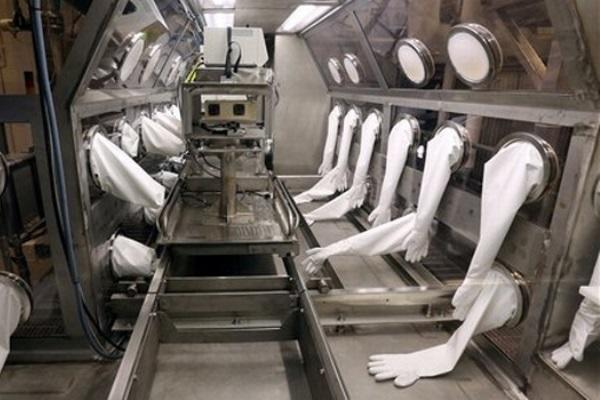The Pentagon has completed its official 30-day review of laboratory procedures and protocols following the mistaken delivery of live Anthrax spores to more than 80 laboratories around the world.
Pentagon leadership expects to announce both findings and recommendations in the coming weeks, Pentagon spokesman Maj. Eric Badger, told Military.com in a written statement.
Multiple mistaken deliveries -- first discovered at the end of May of this year -- raised alarm bells on Capitol Hill -- leading to an immediate Pentagon review of the issue.
"The Department will publicly provide the comprehensive review report and an overview of the next steps by mid-July," Badger said of the review that was led by Pentagon acquisition chief Frank Kendall.
"[The final report] will focus on the root cause for the incomplete inactivation of anthrax samples at DoD laboratories, why post-inactivation sterility testing did not detect the presence of live anthrax, existing DoD laboratory biohazard safety protocols and procedures, DoD laboratory adherence to established procedures and protocols, and identification, and what steps should be taken to fix those problems," Kendall said in June.
Following the discovery of the incident, senior Pentagon officials immediately detailed a host of mitigation efforts such as ordering all DoD labs that have these materials to test all previously inactivated spore-forming anthrax in the inventory.
The number of impacted laboratories has been climbing steadily since the incident was first discovered. Pentagon officials now acknowledge that as many as 84 laboratories in 20 states and Washington, D.C., as well as five foreign countries are now known to have received the live anthrax samples.
The live anthrax, which was mistakenly sent to commercial companies, academic institutions and various federal laboratories, also reached locations in the United Kingdom, Korea, Australia and Canada, a DoD statement said.
At least 22 people are now being treated with what’s called Post-Exposure Prophylaxis, a preventative medical treatment given to people after exposure to a pathogen. Seven non-DoD U.S. citizens and 15 DoD employees are among those now being treated, Pentagon officials said.
Speaking to reporters following the incident, Deputy Defense Secretary Bob Work said that for the past 10 years, the department has regularly shipped inactivated or killed biological material to federal and private partner labs for development of biological countermeasures.
Work added that there is no risk to the general public from the mistakenly sent live anthrax samples, adding that the concentration of the samples was too low to infect the average healthy individual.
"There are no suspected or confirmed cases of anthrax infection among any workers in any of the labs that have received these samples over the last 10 years. And we continue to work with the CDC to ensure that all possible safeguards are taken to prevent exposure at the labs in question, and that any worker that might have had the risk of exposure, even to these low concentrated samples, they are closely monitored," he said.
Meanwhile, a recent Government Accountability Office report found that the Defense Department failed in the oversight of its high-containment laboratories leading up to the anthrax scandal. The report from the GAO, a government watchdog group, also found that the Pentagon mismanaged a program to fix its crumbling infrastructure of facilities for chemical and biological defense.
After nearly seven years of trying, DoD's Chemical Biological Defense Program, CBDP, has failed to reach its goal of identifying or correcting shortcomings at facilities in its inventory, the GAO report said.
In response, Assistant Defense Secretary Arthur Hopkins concurred with the GAO's recommendations and said "the Department is actively reviewing and assessing the core capabilities and infrastructure that are crucial to supporting the research, development, testing and evaluation of effective counter-measures against chemical and biological threats."
-- Richard Sisk contributed to this report
-- Kris Osborn can be reached at kris.osborn@military.com


























